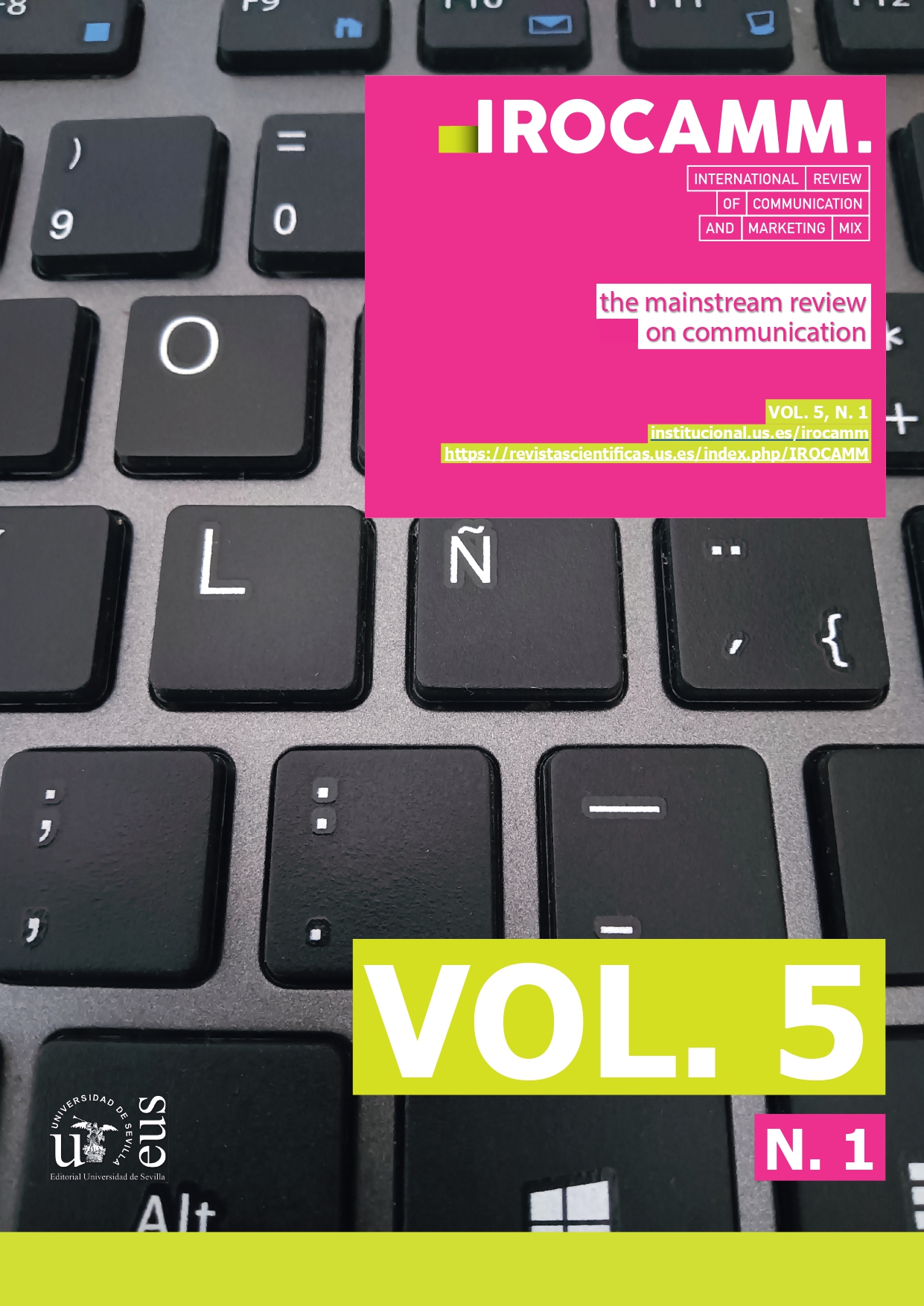Abstract
This paper analyzes the communication of sexual diversity in social networks, based on the analysis of ten accounts of influential Spanish speaking users, members of the trans community, on the TikTok platform. In addition to showing humor and dance videos, this network has also become a communication tool for all kinds of groups, including the LGTBI+ community and the trans community. The videos posted by users, in which they talk about issues related to the transition process are offered not only to people interested in the subject, but to all kinds of public, which causes an effect of normalization and visibility that is not found on other platforms, where this content is only consumed mainly by other trans people or people interested in the subject.
References
Anderson, K. E. (2020). Getting acquainted with social networks and apps: it is time to talk about TikTok. Library Hi Tech
News. https://doi.org/10.1108/LHTN-01-2020-0001
Ballesteros, C. (2018). El índice de engagement en redes sociales , una medición emergente en la Comunicación académica
y organizacional. Razón y Palabra, 22(January), 96–124.
Berners-Lee, T. (2020). Why the web needs to work for women and girls. https://bit.ly/3v0cvja
Casero-Ripollés, A. (2016). Estrategias y prácticas comunicativas del activismo político en las redes sociales en España.
Historia y Comunicación Social, 20(2). https://doi.org/10.5209/rev_hics.2015.v20.n2.51399
Chapple, C. (2019). TikTok Clocks 1.5 Billion Downloads on The App Store and Google Play. Sensor Tower. https://bit.
ly/3uYYQZT
Dawley, S. (2020). Social Trends 2020. Social Media Marketing & Management Dashboard - Hootsuite. https://bit.ly/3FAxyxL
Fraser, N. (1990). Rethinking the Public Sphere: A Contribution to the Critique of Actually Existing Democracy’. Social Text,
/26, 56–80.
Haimson, O. L.; Brubaker, J. R.; Dombrowski, L.; Hayes, G. R. (2015). Disclosure, Stress, and Support During Gender
Transition on Facebook. CSCW ‘15: Proceedings of the 18th ACM Conference on Computer Supported Cooperative
Work & Social Computing, 1176–1190. https://doi.org/10.1145/2675133.2675152
Haunt, C.; Snake, D.; Copies, S. V.; Gateway, U.; Computer, B.; Powershell, T.; Webex, C.; Xe, I. O. S.; Webex, C.; Mesh,
V. (2020). TikTok dangers. Network Security, 2020(1), 3–19. https://doi.org/10.1016/s1353-4858(20)30004-0
Horak, L. (2014). Trans on YouTube: Intimacy, Visibility, Temporality. TSQ: Transgender Studies Quarterly, 1(4), 572–585.
https://doi.org/10.1215/23289252-2815255
Jenzen, O. (2017). Trans youth and social media: moving between counterpublics and the wider web. Gender, Place and
Culture, 24(11), 1626–1641. https://doi.org/10.1080/0966369X.2017.1396204
Kemp, S. (2019). Digital 2019: Q4 Global Digital Statshot — DataReportal. Global Digital Insights. https://bit.ly/3iQyq7s
Kemp, S. (2020). Digital 2020: Global Digital Overview — DataReportal. Global Digital Insights. https://bit.ly/3mGHAEL
Krueger, E. A.; Young, S. D.; Krueger, E. A. (2015). Twitter : A Novel Tool for Studying the Health and Social Needs of
Transgender Communities. JMIR Mental Health, 2, 1–8. https://doi.org/10.2196/mental.4113
Miller, J. F. (2019). YouTube as a Site of Counternarratives to Transnormativity. Journal of Homosexuality, 66(6), 815–837.
https://doi.org/10.1080/00918369.2018.1484629
Pérez Zúñiga, R.; Camacho Castillo, O.; Arroyo Cervantes, G. (2014). Las redes sociales y el activismo. Paakat: Revista de
Tecnología y Sociedad, 4(7), 6. https://bit.ly/3arkRXH
Raun, T. (2012). Out online trans self-representation and community building on YouTube. Routledge.
Rovira Sancho, G. (2017). Activismo en red y multitudes conectadas (Icaria). Universidad Autónoma Metropolitana.
Southerton, C.; Marshall, D.; Aggleton, P.; Rasmussen, M. L.; Cover, R. (2020). Restricted modes: Social media, content
classification and LGBTQ sexual citizenship. New Media and Society. https://doi.org/10.1177/1461444820904362
Tiktok. (2021, September 27). Thanks a billion! TikTok. https://bit.ly/3BrQGeF
Tortajada, I.; Caballero-Gálvez, A. A.; Willem, C. (2019). Counterpublics on youtube: The case of trans communities.
Profesional de La Informacion, 28(6). https://doi.org/10.3145/epi.2019.nov.22
Tortajada, I.; Willem, C.; Platero Méndez, R. L.; Araüna, N. (2020). Lost in Transition? Digital trans activism on Youtube.
Information Communication and Society. https://doi.org/10.1080/1369118X.2020.1797850

This work is licensed under a Creative Commons Attribution-NonCommercial-ShareAlike 4.0 International License.
Copyright (c) 2021 IROCAMM - International Review Of Communication And Marketing Mix


